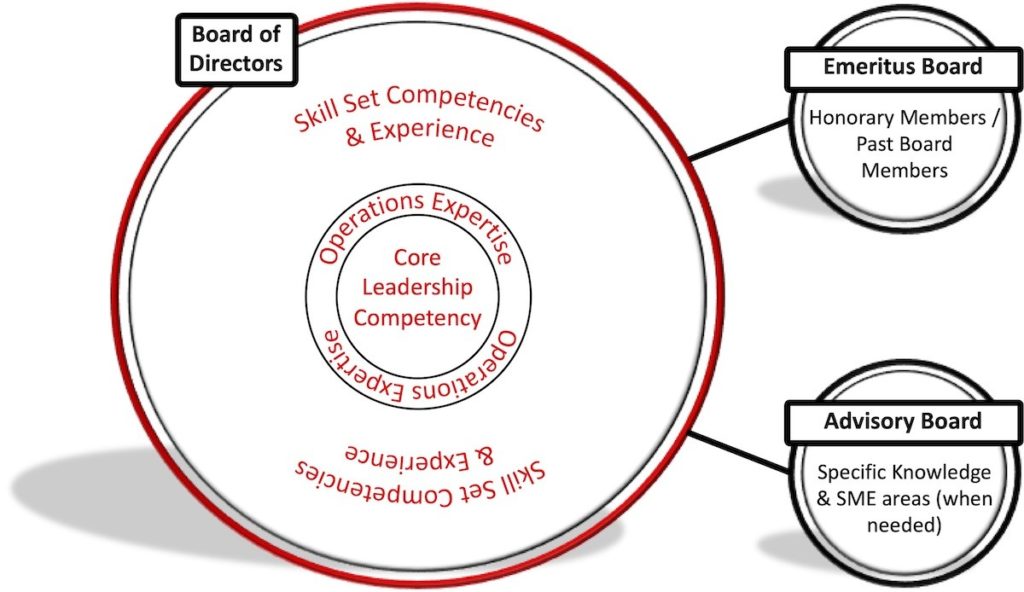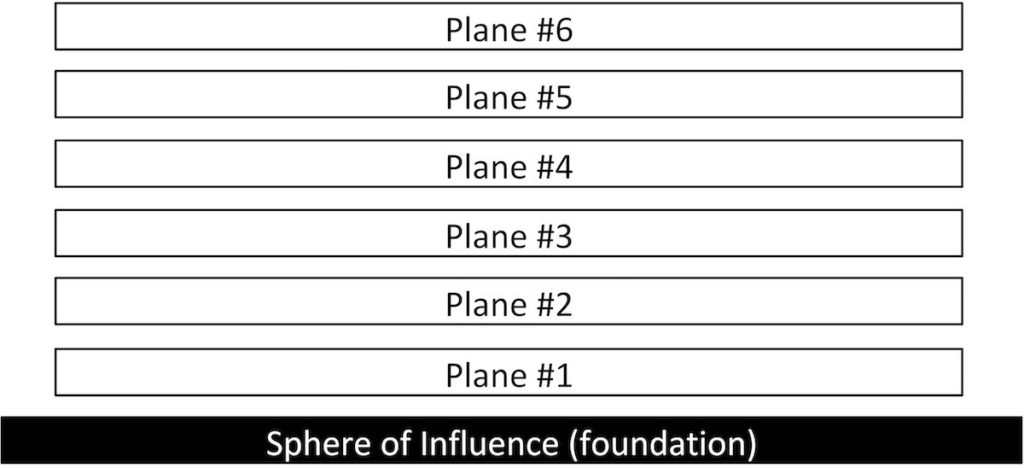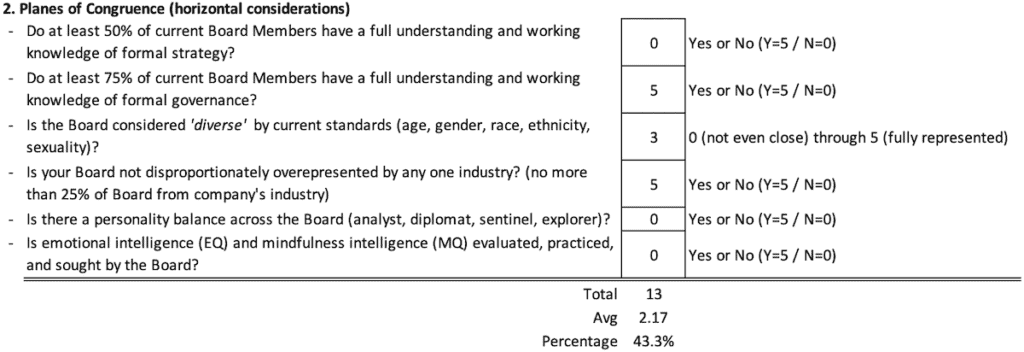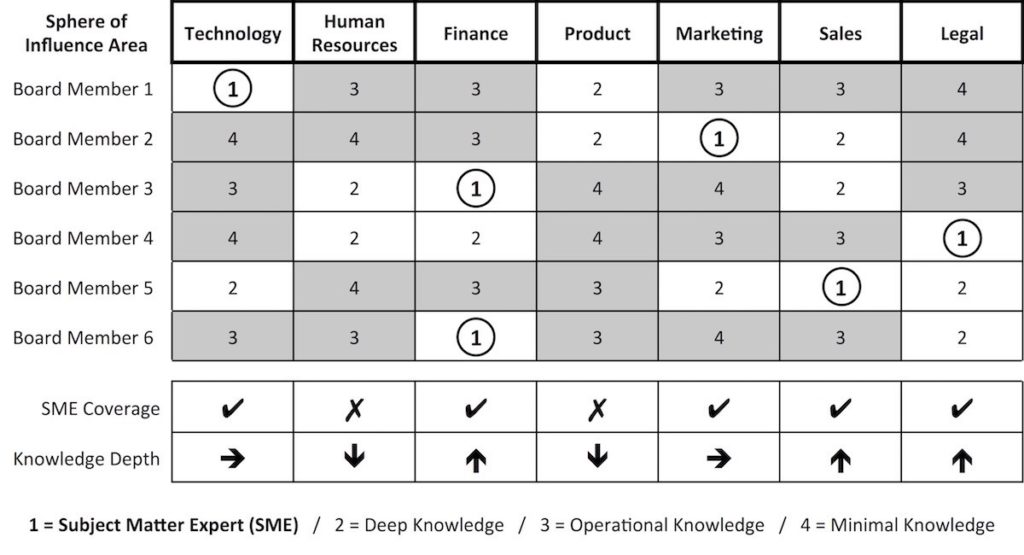The Foundational Structure of the Board Matters More Than You May Think
(Originally appeared in the September 16th, 2020 ‘Across the Board’ publication, a Board Director, Board Advisor, C-Level, and Business Leader publication reaching 26,500+ exceptional business leaders in over 70 countries with articles focused on leadership, strategy, and governance topics – sign up here)
How a Board is structured, or as I like to say, “architected,” has much to do with its current and future effectiveness, efficiency, and success. As I wrote in last month’s article, ‘Heeding The Board’s 5 Observables,’ this is because proper Board architecture considers multiple facets of a Board’s makeup, not solely each individual member’s area of professional expertise or experience.
Following the publication of last month’s article, I received a large amount of response emails asking the question, “…how do I actually rate or measure my Board’s architecture?” So many emails, in fact, that I decided to dedicate this month’s Across The Board newsletter article and ‘Monthly Board Special’ (below) to exactly this topic. Many of the Boards that I advise and provide consulting services have underlying issues with their architecture, causing the vast majority of their chronic issues. For this reason, I always take an in-depth look at how the Board is structured first. Remember, Board Architecture Assessments are important for not only Boards to perform, but can also be extremely valuable for a Board Candidate in deciding whether or not to accept an offered Board position. The long-term risk associated with not fully understanding a Board’s foundational structure is too high to ignore.
Regardless of entity type (public, private, nonprofit), or whether you are building a new Board from scratch or rebuilding/enhancing an existing Board, a properly architected Board should have direct focus on its:
- ‘Sphere of Influence’ – Vertical considerations such as leadership acumen, operational experience, and expertise coverage.
- ‘Planes of Congruence’ – Horizontal considerations such as personality trait balance, strategy and governance acumen, emotional intelligence (EQ), mindfulness intelligence (MQ), among others.
- ‘Coverage and Balance’ – Ensuring the depth and overlap of important expertise to allow for identification and meaningful deliberation / conclusion.
Let’s systematically step through each of these 3 areas with the ability, at a high-level and starting point, to score your Board’s architecture through an abridged and shortened version of a Board Architecture Assessment.
1. Sphere of Influence
What exactly is meant by your Board’s Sphere of Influence? This refers to your Board’s industry & industry vertical diversity and experience. You can think of your Sphere of Influence (actual Board Members) as including chosen skill sets in vertical orientations.

I am a proponent of having Board Member representation from numerous industries at the table, not just those with direct experience in your company’s industry or industry vertical. If this is ignored, you are essentially creating a bubble of intelligence that is insulated from the rest of the world’s best practices and devoid of other industry advancements – a dangerous proposition in these times of fast change, where quick adaptability can be one of the keys to survival.
Example Sphere of Influence high-level / starting point assessment:

Note: It is not uncommon for Boards to score around 50% or less in this section, as well as the following 2 sections, when initially performing an assessment and prior to any corrective actions.
(See pages 99 – 117 in my book ‘Across The Board – The Modern Architecture Behind an Effective Board of Directors’ for in-depth details on proper Board Sphere of Influenceconstruction and considerations)
2. Planes of Congruence
Above and beyond industry and industry vertical expertise included in the design of your Board, Board Member composition for your team should additionally be evaluated at multiple ‘planes,’ or horizontal considerations, spanning across the entire Board makeup. These horizontal planes add depth to your Board by creating additional ‘character’ starting with the individual Board Members and effectively encompassing the entire Board as a single operational entity.

These horizontals, called ‘Planes of Congruence,’ provide initial and additional evaluation criteria for Board candidates, as well as offer further structure for in-place Boards. In my experience, it is amazing how many existing Boards, or those in the process of being built, simply stop at unfinished portions of the previous Sphere of Influence step. These organizations have failed to infuse ‘character’ into their Board, which in many cases leads to stagnant interaction and sub-par performance.

In most scenarios, Boards have a combination of standard and consistent Planes of Congruence requirements (many of which are seen in the above example) mixed with other more fluid requirements dependent on risks and challenges, phase of growth, changing social norms, and other important factors.
(See pages 119 – 125 in my book ‘Across The Board – The Modern Architecture Behind an Effective Board of Directors’ for in-depth details on proper Board Planes of Congruenceconstruction, categories, and considerations)
3. Coverage & Balance
Similar to your Planes of Congruence creating the ‘character’ of your Board, the Coverage & Balance of your Board, as it correlates to Board Members’ expertise and experience, creates the ‘depth’ of your Board. Depth is an important characteristic of Boards as it offers relevant guidance and deeper thought processes leading to more effective deliberation on important Board topics and strategies.
In essence, Board Member Coverage & Balance refers to two basic concepts:
- Coverage: Ensuring that you have engaged at least one true expert in each of your designed Sphere of Influence areas on your Board, while also meeting your Planes of Congruence requirements.
- Balance: A strategic and predetermined overlap of expertise and experience as it relates to your Board’s Sphere of Influence areas, while also meeting your Planes of Congruence requirements.
In the following example view, this particular Board was aiming for at least 1 subject matter expert (SME) and at least 1 additional ‘deep knowledge’ or greater representative in each of their Sphere of Influence areas. Although they hadn’t reached their goal at the time of this assessment, we developed a strategy and plan of requirements for all new future Board Members to support the desired outcome, which we accomplished in the subsequent 3 quarters of that year.

Example Coverage & Balance high-level / starting point assessment:

(See pages 127 – 135 in my book ‘Across The Board – The Modern Architecture Behind an Effective Board of Directors’ for in-depth details on proper Board Coverage & Balance construction and considerations)
In these example high-level / starting point assessment criteria, it has been assumed that all 3 categories are equally weighted. When performing an in-depth and longer-form assessment, certain categories may take on higher significance in weighting due to current and future importance.
Confirming proper Board architecture is extremely important to ensure successful Board operations and valuable support for the organization. For existing Boards it offers a unique entry point for a holistic evaluation without relying on preconceived notions. For newly forming Boards it offers a blueprint for success and Board-build efficiency. Spending the time to do this correctly is not only important, but imperative.

 5.0
5.0 





















